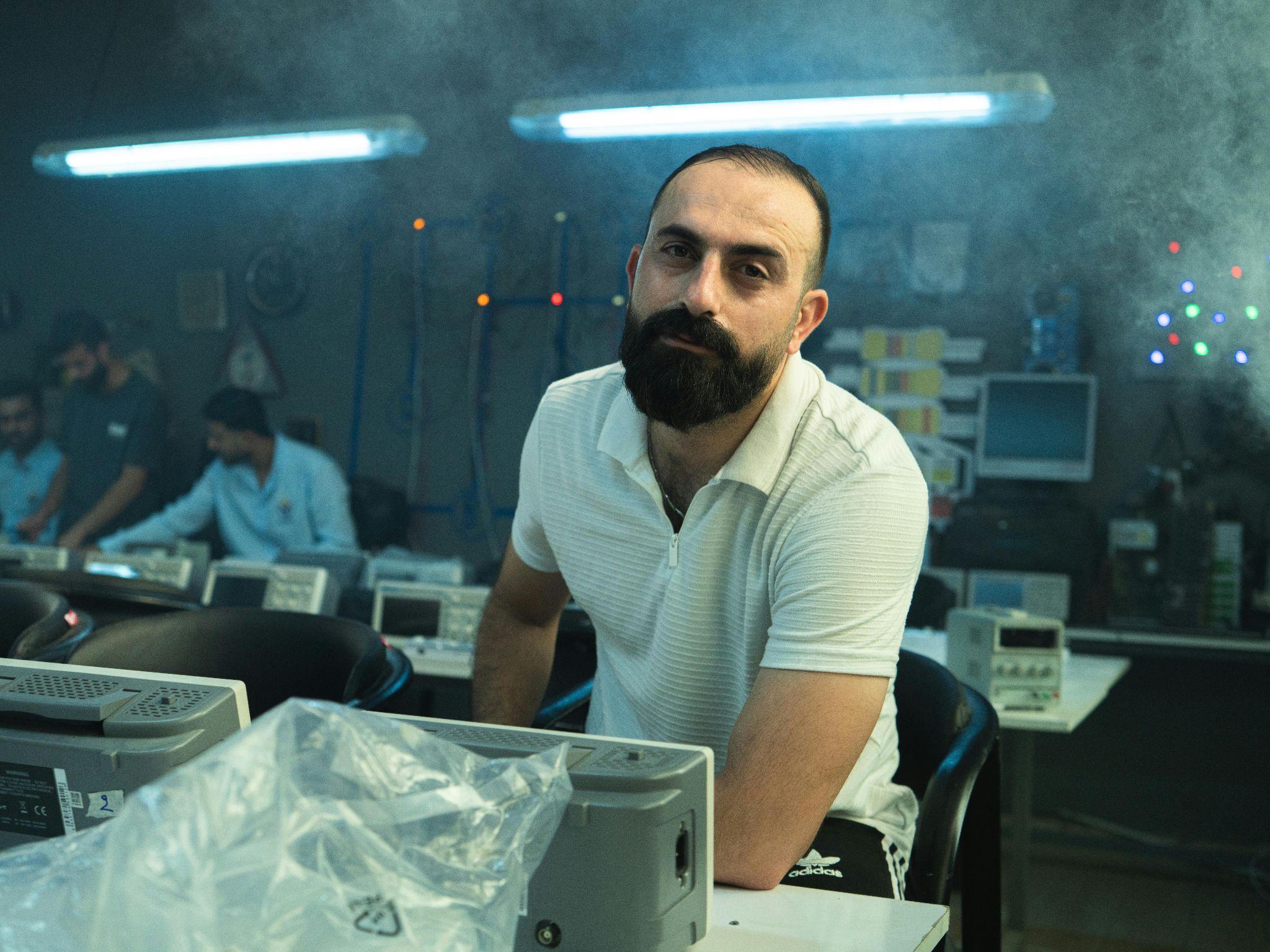The traditional boardroom scene—a single executive commanding from the head of a polished table while subordinates nod in agreement—has become as outdated as the rotary phone. Modern organizations are discovering that legacy leadership models are not just insufficient; they’re actively counterproductive in today’s dynamic workplace environment. As employee expectations evolve at breakneck speed, companies face an urgent imperative to fundamentally rethink leadership approaches that were designed for a bygone era.
The Forces Driving Change in Leadership Expectations
Three seismic forces are converging to reshape what employees expect from their leaders: generational value shifts, technological disruption, and evolving cultural norms. These pressures are creating an unprecedented demand for adaptive leadership that can navigate complexity while maintaining authentic human connections.
Generational Shifts and Values: What Gen Z & Millennials Expect
Today’s workforce brings fundamentally different expectations about leadership authenticity, work-life integration, and organizational purpose. Gen Z and Millennial employees demand leaders who can demonstrate emotional intelligence while fostering environments of psychological safety and continuous growth.
Key generational expectations include:
- Transparent communication with regular feedback and open dialogue
- Purpose-driven work that aligns with personal values and societal impact
- Flexible leadership styles that adapt to individual needs and working preferences
- Psychological safety where innovation and calculated risk-taking are encouraged
- Career development focused on skills acquisition rather than traditional advancement
- Authentic leadership that demonstrates vulnerability and genuine care for employee wellbeing
Technology, AI & the Hybrid Workplace Disruption
Digital transformation and artificial intelligence have fundamentally altered how work gets done, requiring leaders to master new competencies while maintaining human-centered approaches. The hybrid workplace model has destroyed traditional assumptions about supervision, collaboration, and performance management.
| Legacy Expectation | New Expectation |
|---|---|
| Physical presence equals productivity | Output and impact define performance |
| Hierarchical information flow | Democratized access to data and insights |
| Standardized work processes | Customized, AI-augmented workflows |
| Leader as subject matter expert | Leader as facilitator and coach |
| Command-and-control decision making | Collaborative, data-informed choices |
Culture, Diversity & Personalization as Baseline Norms
Modern employees expect inclusive cultures that celebrate diverse perspectives while providing personalized development experiences. These expectations have shifted from “nice-to-have” benefits to fundamental requirements for workplace engagement.
Essential cultural dimensions include:
- Belonging: Creating environments where all identities are valued and respected
- Equity: Ensuring fair access to opportunities, resources, and advancement paths
- Autonomy: Empowering employees to make decisions within their sphere of influence
- Growth: Providing continuous learning opportunities tailored to individual aspirations
Why Traditional Leadership Models Fall Short
Conventional leadership approaches, rooted in industrial-era assumptions about hierarchy and control, create friction with modern workplace realities. These outdated models generate disengagement, stifle innovation, and ultimately drive talent toward more progressive organizations.
Top-Down Command & Control is No Longer Credible
Authoritarian leadership styles that rely on positional authority rather than earned influence alienate knowledge workers who possess specialized expertise. Modern employees expect collaborative decision-making processes where their insights are valued and incorporated into strategic thinking.
Siloed, Static Role Definitions Conflict with Fluid Work
Rigid organizational structures and inflexible job descriptions prevent organizations from adapting quickly to market changes. Cross-functional collaboration and dynamic role design have become essential for maintaining competitive advantage in rapidly evolving industries.
Failure to Invest in Emotional & Adaptive Intelligence
Many leaders lack the emotional intelligence necessary to navigate complex interpersonal dynamics and build trust with diverse teams. This deficit becomes particularly problematic in remote and hybrid environments where traditional relationship-building approaches prove inadequate.
Core Principles for Rethought Leadership

Effective modern leadership requires a fundamental shift from controlling outcomes to creating conditions for success. These principles provide the foundation for building adaptive leadership capabilities that thrive in uncertainty while maintaining human-centered values.
Distributed & Shared Leadership: Empowerment Over Control
Shared leadership models distribute decision-making authority across organizational levels, enabling faster responses to challenges while developing leadership capabilities throughout the workforce.
Effective practices include:
- Peer coaching programs that develop leadership skills at all organizational levels
- Leadership rotation opportunities that expose emerging leaders to diverse experiences
- Decision frameworks that clarify authority levels and empower autonomous choices
- Cross-functional team leadership that rotates based on project needs and expertise
Adaptive Leadership: Leading Amid Uncertainty
Adaptive leaders excel at navigating ambiguous situations by adjusting their approach based on context, stakeholder needs, and emerging information. This flexibility enables organizations to pivot quickly while maintaining team cohesion and performance.
| Directive Response | Adaptive Response |
|---|---|
| Provides specific solutions | Facilitates problem-solving processes |
| Makes unilateral decisions | Seeks diverse perspectives before deciding |
| Maintains rigid timelines | Adjusts plans based on new information |
| Controls information flow | Shares context and invites input |
Purpose-Driven & Values-Centered Leadership
Leaders who can articulate compelling organizational purpose and consistently demonstrate core values create stronger employee engagement and more sustainable business results. Values-based decision making provides clarity during difficult choices while building trust and authenticity. According to Deloitte’s Global Human Capital Trends report, organizations with strong purpose-driven leadership report 40% higher employee retention and 70% better innovation outcomes.
Emotional Intelligence + Psychological Safety as Non-Negotiables
Modern leaders must master the ability to create psychological safety while demonstrating emotional intelligence in all interactions. These capabilities enable teams to take calculated risks, share innovative ideas, and maintain high performance during challenging periods.
Behaviors that build psychological safety include:
- Active listening that demonstrates genuine interest in employee perspectives
- Vulnerability modeling where leaders admit mistakes and uncertainties
- Constructive feedback that focuses on growth rather than criticism
- Recognition of effort alongside celebration of achievements
- Inclusive decision-making that values diverse viewpoints and experiences
Strategies to Operationalize Next-Gen Leadership
Transforming leadership approaches requires systematic implementation strategies that address assessment, development, and measurement. These tactical methods enable organizations to move beyond theoretical concepts toward practical behavior change.
Leadership Diagnostics & Contextual Assessment
Effective transformation begins with honest assessment of current leadership capabilities and organizational readiness for change. Leadership diagnostics should evaluate both individual competencies and systemic factors that influence leader effectiveness.
Learning & Development for Leadership at All Levels
Traditional leadership development focused exclusively on high-potential employees and senior executives is insufficient for modern organizational needs. Democratized leadership development creates broader capability while building more resilient organizations.
Implementation timeline:
- Months 1-3: Assess current leadership capabilities and identify skill gaps
- Months 4-9: Launch foundational programs covering emotional intelligence and adaptive thinking
- Months 10-15: Implement advanced modules focusing on strategic thinking and change management
- Months 16-24: Establish peer coaching networks and continuous learning systems
Role Redesign & Dynamic Career Paths
Flexible role design enables organizations to adapt quickly while providing employees with diverse development experiences. This approach moves beyond traditional career ladders toward lattice models that emphasize skill acquisition and impact.
Embedding Feedback Loops & Continuous Improvement
Leaders must actively seek feedback and demonstrate willingness to modify their approaches based on input. Regular feedback cycles create accountability while modeling the continuous improvement mindset essential for organizational learning.
Measuring Impact: KPIs for Leadership Adaptation
Successful leadership transformation requires clear metrics that track both behavioral changes and business outcomes. These measurements provide accountability while identifying areas for continued development.
| Metric | Desired Outcome |
|---|---|
| Employee engagement scores | 85% or higher satisfaction with leadership |
| Internal mobility rates | 30% increase in cross-functional moves |
| Innovation pipeline | 50% more ideas submitted and implemented |
| Retention of high performers | 90% retention rate for top talent |
| Team psychological safety | Measurable improvement in team dynamics |
Case Examples & Lessons from Leading Organizations

Progressive organizations demonstrate that leadership transformation is both achievable and profitable when approached systematically. These examples provide practical insights into successful implementation strategies.
Examples of Companies That Evolved Leadership
Microsoft transformed from a competitive, hierarchical culture to one emphasizing growth mindset and collaboration under CEO Satya Nadella’s leadership. The company implemented inclusive leadership training and shifted performance management toward coaching and development.
Patagonia demonstrates purpose-driven leadership by aligning business decisions with environmental values while empowering employees to make autonomous choices that reflect organizational principles.
Common Pitfalls and What to Avoid
Organizations frequently stumble when attempting leadership transformation by making these critical mistakes:
- Superficial change that focuses on training without systemic support
- Lack of accountability for new behaviors and expectations
- Leader resistance from executives unwilling to modify established approaches
- Cultural mismatch between stated values and actual reward systems
Roadmap for Transformation: Phases & Milestones
Successful leadership transformation requires a phased approach that builds momentum while maintaining organizational stability. This roadmap provides structure for systematic change management.
Phase 1: Discovery & Awareness
Initial assessment should include leadership capability audits, employee interviews, and baseline measurement of key engagement metrics. This foundation enables targeted intervention strategies.
Phase 2: Pilot & Experimentation
Small-scale pilots allow organizations to test new approaches while minimizing risk. Learning cohorts provide safe spaces for leaders to practice new behaviors and share experiences.
Phase 3: Scaling & Embedding
Successful pilot programs should be integrated into performance management systems, leadership pipelines, and cultural rituals. This institutionalization ensures sustainability beyond initial enthusiasm.
Phase 4: Reinforcement & Evolution
Continuous improvement requires regular reassessment of leadership models and willingness to adapt approaches based on changing organizational needs and market conditions.
Conclusion
The imperative to rethink leadership has never been more urgent or consequential. Organizations that cling to outdated models risk losing their most valuable assets—engaged, innovative employees who drive competitive advantage. The transformation toward adaptive, human-centered leadership requires courage, commitment, and systematic implementation, but the rewards include stronger performance, higher engagement, and more sustainable growth. Companies that begin this journey now will position themselves as employers of choice while building the leadership capabilities necessary for long-term success. The question is not whether leadership must evolve, but whether organizations will lead this transformation or be forced to follow.

